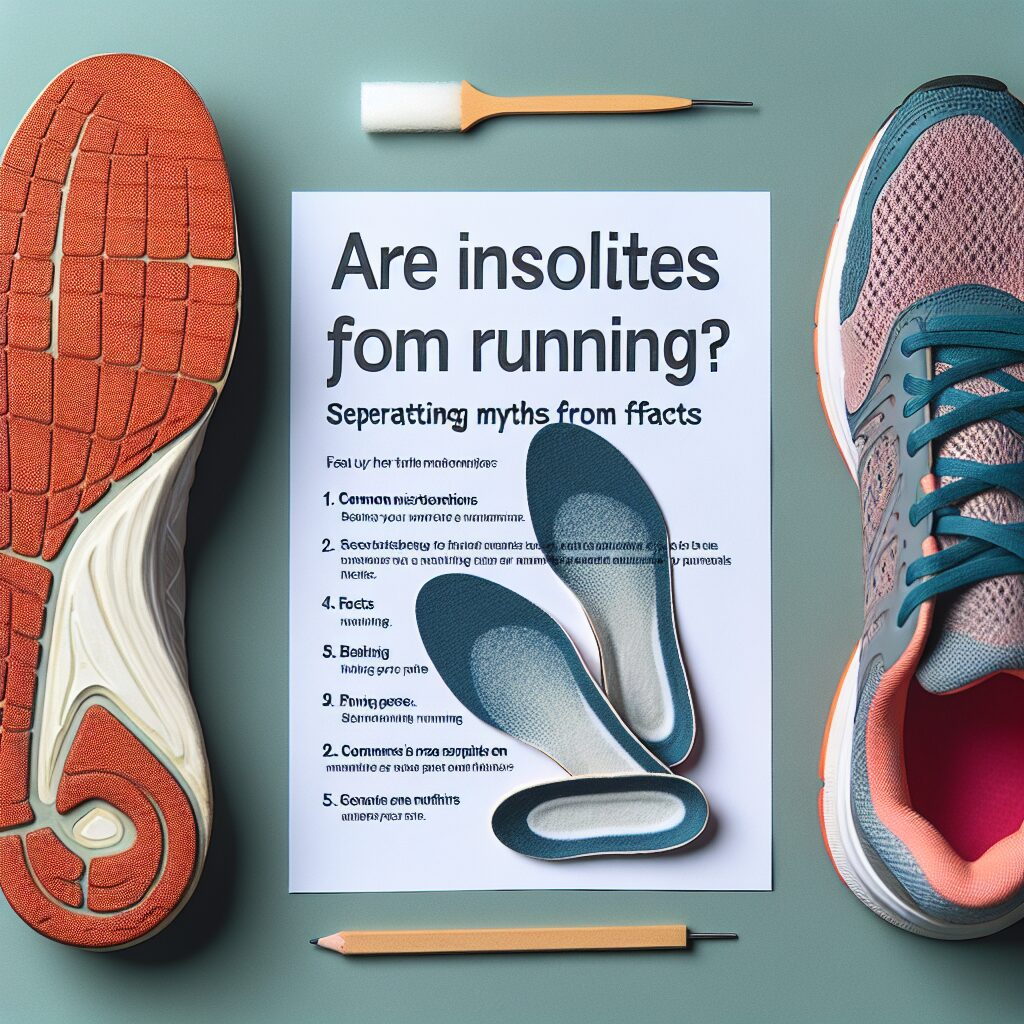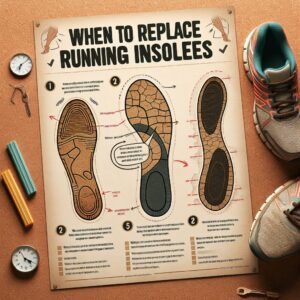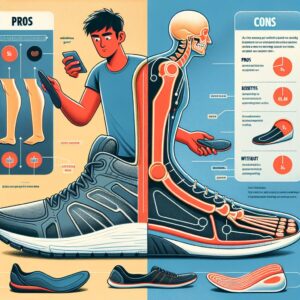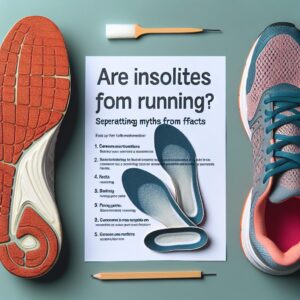
Are Insoles Good for Running? Separating Myths from Facts
-
Table of Contents
Insoles can significantly benefit running by offering enhanced shock absorption and energy return into your legs. This added support not only improves comfort but also efficiency during runs, thanks to materials like carbon fiber, which is known for being stiff, lightweight, and durable. Moreover, the right pair of running insoles can lead to a better overall running experience by helping to prevent common running-related injuries and providing stability and comfort for various foot types, including those with high arches or flat feet.
Unraveling the Truth: Are Insoles Really Beneficial for Running?

Running is a popular form of exercise that offers numerous health benefits, from improving cardiovascular health to boosting mental well-being. However, it can also lead to various injuries, particularly if done without proper footwear. This is where the debate on the use of insoles for running comes into play. Some runners swear by them, while others dismiss them as unnecessary. To separate myths from facts, let’s delve into the question: Are insoles really beneficial for running?
Insoles, also known as foot orthotics, are inserts that are placed inside shoes to provide additional support and cushioning. They come in various types, including custom-made orthotics designed by podiatrists and over-the-counter insoles available in sports stores. The primary purpose of insoles is to correct foot imbalances, alleviate pain, and prevent injuries.
One common myth is that insoles are only for those with foot problems. While it’s true that insoles can help individuals with conditions such as flat feet, plantar fasciitis, or overpronation, they can also benefit runners without these issues. Insoles can enhance the fit and comfort of running shoes, reducing the risk of blisters and other discomforts. They can also improve running performance by promoting better foot alignment and gait efficiency.
However, it’s essential to note that not all insoles are created equal. The effectiveness of insoles largely depends on their quality and suitability to the runner’s foot type and running style. High-quality, well-fitted insoles can provide significant benefits, while poorly made or ill-fitted ones can do more harm than good. Therefore, it’s crucial for runners to consult with a podiatrist or a trained shoe specialist before purchasing insoles.
Another myth is that insoles can replace good running shoes. This is far from the truth. While insoles can enhance the function of running shoes, they cannot compensate for shoes that are worn out, ill-fitting, or unsuitable for the runner’s foot type and running style. Runners should invest in good running shoes first and consider insoles as a supplementary tool for added support and comfort.
Moreover, it’s a misconception that insoles can cure running injuries. While insoles can help prevent certain injuries by providing better foot support and alignment, they are not a magic cure for all running-related injuries. Injuries often result from a combination of factors, including improper running technique, inadequate training, and lack of strength and flexibility. Therefore, runners should address these issues and not rely solely on insoles for injury prevention.
In conclusion, insoles can indeed be beneficial for running, but they are not a panacea. They can enhance the comfort and fit of running shoes, improve foot alignment and gait efficiency, and help prevent certain injuries. However, they should be used in conjunction with good running shoes and proper running technique. Runners should also seek professional advice to ensure they choose the right insoles for their needs. By separating myths from facts, runners can make informed decisions about using insoles and enjoy a safer, more comfortable running experience.
Running with Insoles: Myths Debunked and Facts Revealed
Running is a popular form of exercise that offers numerous health benefits. However, it can also lead to various injuries, particularly if done without proper footwear. One common solution to this problem is the use of insoles. But are insoles good for running? This question has been the subject of much debate, with various myths and facts surrounding the issue. This article aims to separate the myths from the facts and provide a clear understanding of the role of insoles in running.
One prevalent myth is that insoles are only for those with foot problems. This is not entirely accurate. While it’s true that insoles can provide relief for conditions such as plantar fasciitis, flat feet, and overpronation, they can also be beneficial for runners without these issues. Insoles can enhance comfort, improve shoe fit, and reduce the risk of injuries, making them a valuable tool for any runner.
Another common misconception is that all insoles are the same. In reality, there is a wide variety of insoles available, each designed for different purposes. Some are designed to provide extra cushioning, others to offer more support, and some to correct specific foot issues. Therefore, it’s essential to choose the right type of insole based on your individual needs and running style.
A third myth is that insoles can replace good running shoes. This is a dangerous misconception. While insoles can enhance the comfort and fit of your shoes, they cannot compensate for poor-quality footwear. Running shoes are designed to provide support, cushioning, and stability, and these features cannot be replaced by insoles. Therefore, it’s crucial to invest in good running shoes first and consider insoles as an additional tool to enhance your running experience.
Now that we’ve debunked some myths, let’s look at the facts. Research has shown that insoles can indeed improve running performance. A study published in the Journal of Sports Sciences found that insoles could reduce the rate of perceived exertion, making running feel easier. Another study in the Journal of Foot and Ankle Research found that insoles could reduce foot and ankle injuries in runners.
Moreover, insoles can also improve running efficiency. They do this by promoting a more natural foot movement and reducing energy loss during the running gait. This can result in a smoother, more efficient run, potentially improving your speed and endurance.
In conclusion, while there are many myths surrounding the use of insoles for running, the facts suggest that they can be a valuable tool for runners. They can enhance comfort, improve shoe fit, reduce the risk of injuries, and even improve running performance and efficiency. However, it’s important to remember that insoles are not a replacement for good running shoes and should be chosen based on individual needs and running style. Therefore, if you’re a runner, it might be worth considering adding insoles to your running gear.
The Impact of Insoles on Running Performance: Myths vs Facts
Running is a popular form of exercise that offers numerous health benefits, but it can also lead to various injuries if not done correctly. One common debate among runners is the use of insoles and their impact on running performance. There are many myths and misconceptions surrounding this topic, so it’s essential to separate fact from fiction to make an informed decision.
One prevalent myth is that insoles are only for those with foot problems. While it’s true that insoles can provide relief for conditions like plantar fasciitis or flat feet, they can also benefit runners without any specific foot issues. Insoles can enhance comfort, reduce fatigue, and improve running efficiency by providing additional cushioning and support. Therefore, the notion that insoles are exclusively for those with foot problems is a myth.
Another common misconception is that insoles can correct poor running form. While insoles can help align the foot and reduce certain types of strain, they are not a cure-all solution for improper running technique. It’s crucial to understand that insoles are a tool that can aid in comfort and injury prevention, but they cannot replace the benefits of proper training and technique. Therefore, the belief that insoles can correct poor running form is a myth.
On the other hand, it is a fact that insoles can help reduce the risk of injury. By providing additional support and cushioning, insoles can help absorb shock and reduce stress on the feet, ankles, and knees. This can be particularly beneficial for long-distance runners or those running on hard surfaces. However, it’s important to note that insoles are not a substitute for proper footwear or a well-rounded training program.
Another fact is that not all insoles are created equal. There are various types of insoles available, each designed for different purposes. Some are designed to provide extra cushioning, while others are designed to offer more arch support. Therefore, it’s essential to choose the right type of insole based on your specific needs and running style.
Lastly, it’s a fact that insoles need to be replaced regularly. Just like running shoes, insoles wear down over time and lose their effectiveness. Most experts recommend replacing insoles every 300-500 miles, but this can vary depending on the type of insole and how often it’s used.
In conclusion, while there are many myths surrounding the use of insoles, there are also undeniable facts about their benefits. Insoles can enhance comfort, improve running efficiency, and help reduce the risk of injury. However, they are not a cure-all solution and should be used as part of a comprehensive approach to running that includes proper footwear, training, and technique. Therefore, whether you’re an experienced runner or a beginner, it’s worth considering the use of insoles to potentially enhance your running performance.In conclusion, insoles can be beneficial for running as they provide additional support, reduce the risk of injuries, and enhance comfort. However, their effectiveness varies from person to person, depending on individual foot structure and running style. Therefore, it’s essential to consult with a healthcare professional or a running specialist before using insoles for running. It’s also important to remember that insoles are not a cure-all solution and should be used in conjunction with proper running shoes and technique.





